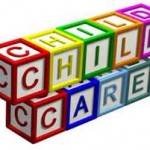Brutality Touches Down at Home
 Anyone living in the United States who has watched TV in the last two weeks is undoubtedly aware that the NFL is in the midst of a storm of bad publicity. First, we saw the chilling videotape of Baltimore Ravens running back Ray Rice delivering a punch to the head that knocked out his then-fiancée (now wife) Janay Palmer, and then roughly dragging her off the elevator and dropping her like a sack of potatoes on the floor. Only days later, the Minnesota Vikings found themselves in the midst of a similar scandal when their star running back Adrian Peterson was charged with felony child abuse in Texas, where it is alleged he beat his 4-year-old son with a “switch.” Perhaps learning from the debacle that ensued when NFL Commissioner Roger Goodell originally imposed a meagre two-game suspension on Rice for his misdeeds, the Minnesota Vikings have suspended Peterson from games and team activities indefinitely, although since he continues to draw his $11 million dollar salary, he is hardly a sympathetic character at the moment. Meanwhile, the incidents involving NFL player violence against their partners and children keep surfacing.
Anyone living in the United States who has watched TV in the last two weeks is undoubtedly aware that the NFL is in the midst of a storm of bad publicity. First, we saw the chilling videotape of Baltimore Ravens running back Ray Rice delivering a punch to the head that knocked out his then-fiancée (now wife) Janay Palmer, and then roughly dragging her off the elevator and dropping her like a sack of potatoes on the floor. Only days later, the Minnesota Vikings found themselves in the midst of a similar scandal when their star running back Adrian Peterson was charged with felony child abuse in Texas, where it is alleged he beat his 4-year-old son with a “switch.” Perhaps learning from the debacle that ensued when NFL Commissioner Roger Goodell originally imposed a meagre two-game suspension on Rice for his misdeeds, the Minnesota Vikings have suspended Peterson from games and team activities indefinitely, although since he continues to draw his $11 million dollar salary, he is hardly a sympathetic character at the moment. Meanwhile, the incidents involving NFL player violence against their partners and children keep surfacing.
A lot has already been said and written about these cases, and much of the discussion is thoughtful and educational. Numerous commenters, including New York Times columnist Michael Powell, have pointed out that we should not be so shocked that players who are rewarded for brutality on the football field revert to violent behavior at home. He makes an excellent point. After all, the NFL is not the only place where people who use force, sometimes brutal force, in their jobs have a hard time turning it off at home: the military and various police forces have faced similar issues. Moreover, we live in a society with a high tolerance for violence, at least violence of a recreational sort—as evidenced by numerous TV shows, video games and movies.

